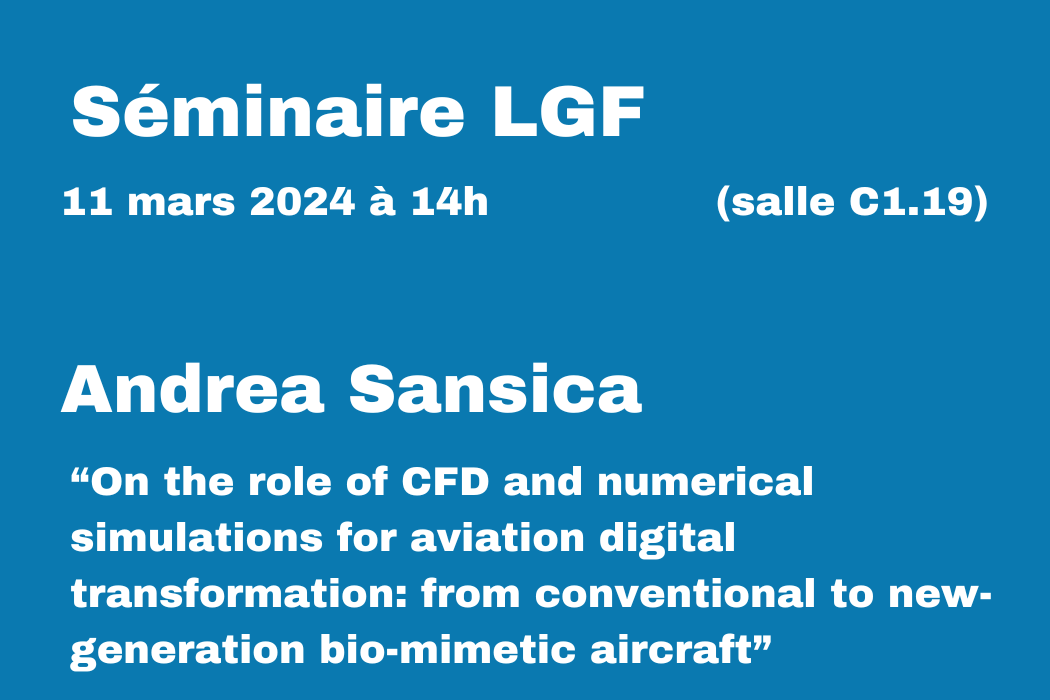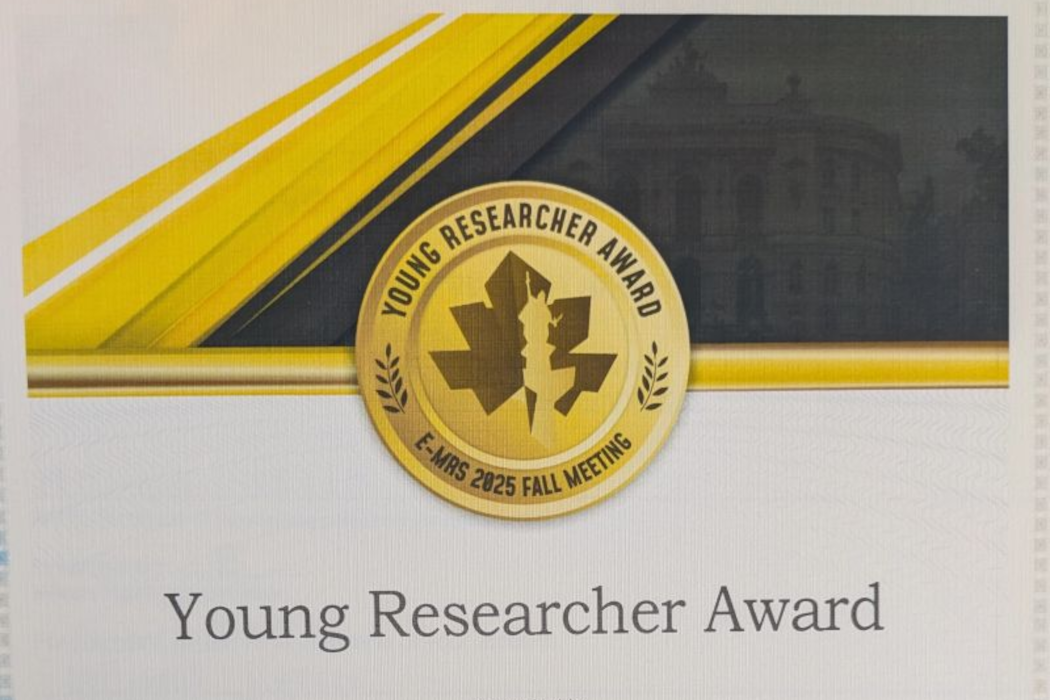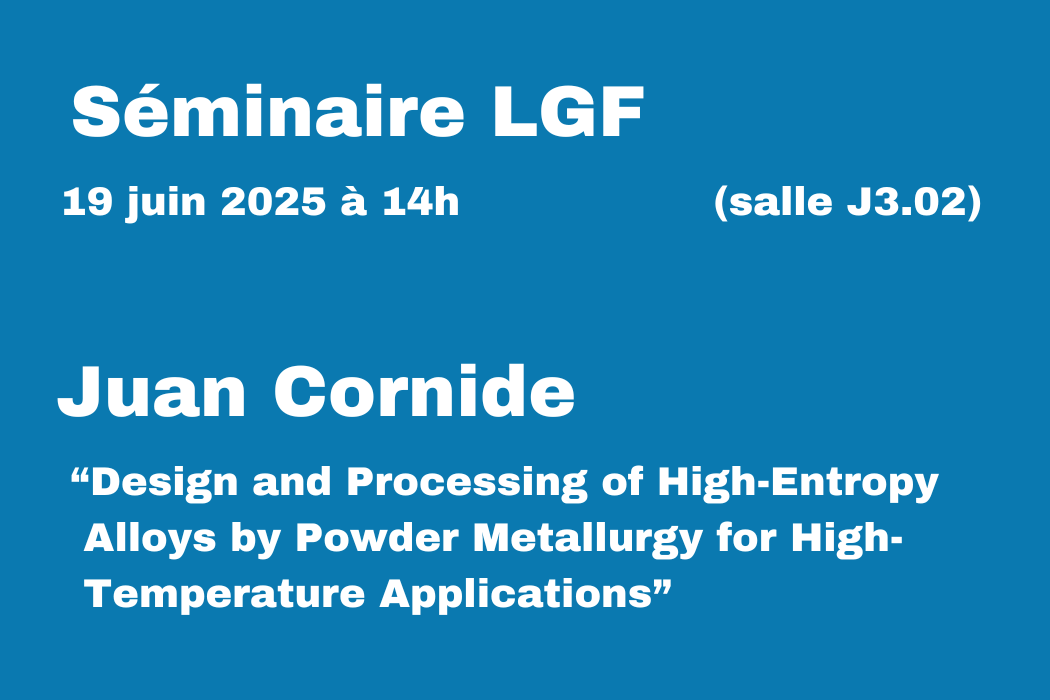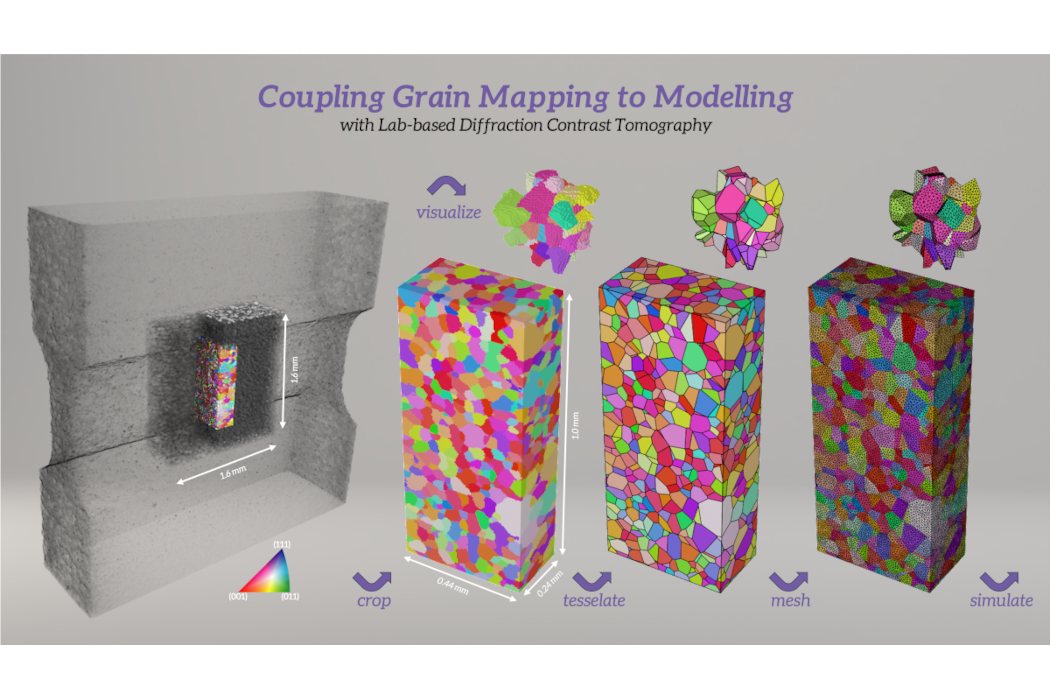Mouna Hello, doctorante au laboratoire, a reçu le Young Student Award du 2025 fall meeting…
Séminaire LGF – Andrea Sansica (Japan Aerospace Exploration Agency, Japon) – 11 mars 2024

Intitulé
On the role of CFD and numerical simulations for aviation digital transformation: from conventional to new-generation bio-mimetic aircraft
Résumé
The recent attained maturity of numerical methods and artificial intelligence (AI), as well as a facilitated accessibility to / greater availability of high-performance computing facilities have opened to the possibility of supporting aircraft development and certification through simulations. Numerical tools are however well calibrated only in a very small region of the flight envelope, and their extension to other design and off-design phases is key for the realization of the so-called “digitalization” of the aircraft lifecycle and exploration of new-generation aircraft configurations. Transonic buffet and stall are examples of critical off-design conditions for which a reliable set of numerical tools is needed. Avoided by limiting the flight envelope – and consequently the aircraft performance – these flow conditions must be accurately predicted and understood to realize Certification by Analysis (CbA). In the present talk, JAXA’s numerical efforts on the development of numerical tools to support CbA will be described. Emphasis will be placed on AI-based system identification for rapid modeling, global stability analysis and high-fidelity simulations on wide-span periodic wings, with particular stress on their scope and use for new-generation aircraft concept development. Finally, an overview of JAXA’s experimental activities and involvement with the local and international communities to support numerical prediction workshops for the assessment of state-of-the-art solvers on industry-relevant geometries and flow conditions will also be given.
Biographie
Dr Andrea Sansica graduated at the faculty of Space Engineering of the University of Rome La Sapienza in 2011. After a one-year Master by Research at Cranfield University in the Space Propulsion Department, he entered the PhD program at the University of Southampton to work on high-fidelity simulations of shock-wave/boundary-layer interactions. Once completed his PhD program in 2015, he was awarded a PostDoc Fellowship at the Centre National d’Études Spatiales (CNES) in France, where he performed numerical analyses of the rocket engine nozzle instabilities during start-up and shut-down transients. In 2018, he joined the Aviation Technology Directorate of the Japan Aerospace Exploration Agency (JAXA) as Project Research Associate. Since 2021, he is a research staff and team lead at JAXA Chofu Aerospace Center and responsible for the numerical activities concerning Certification by Analysis.



